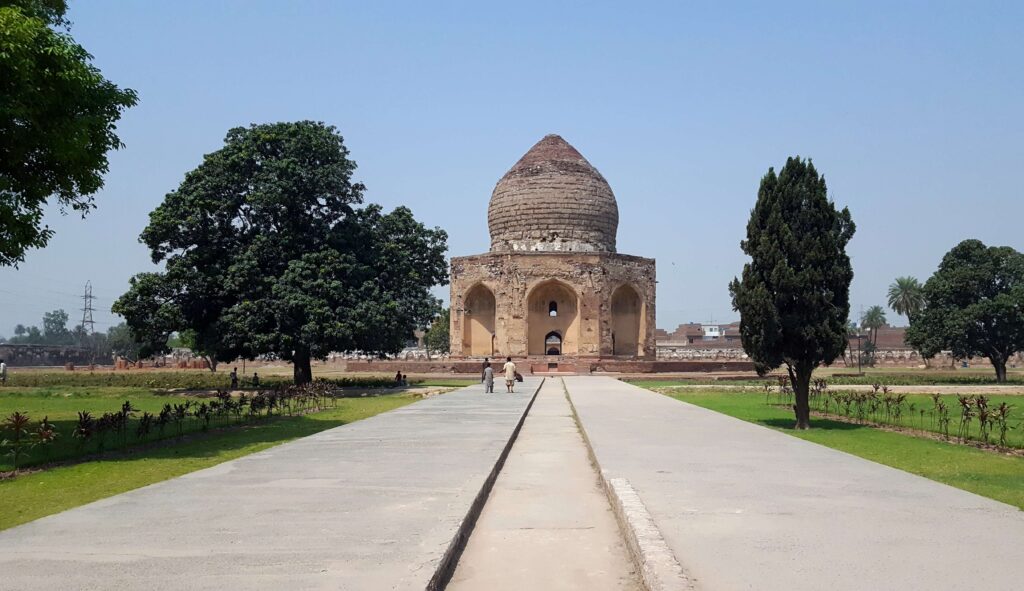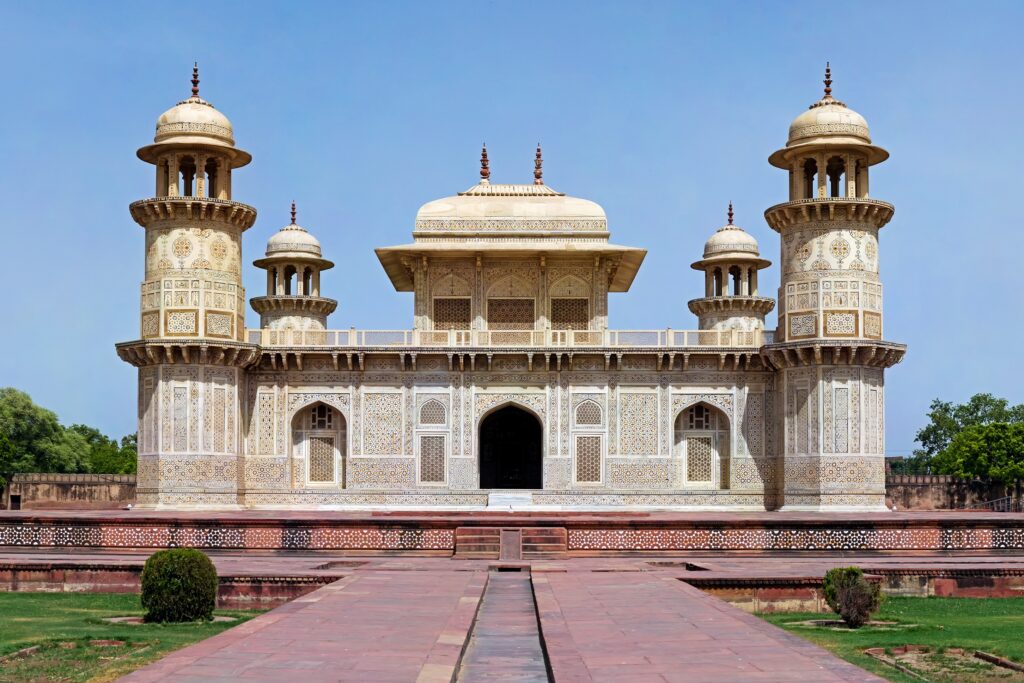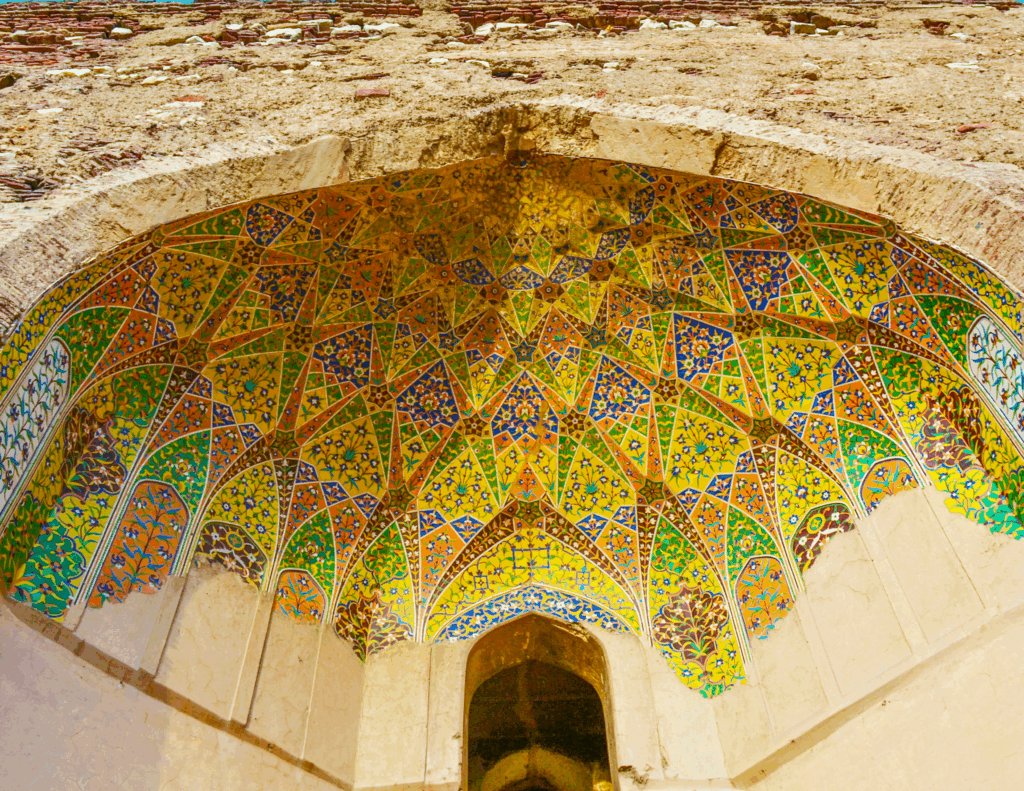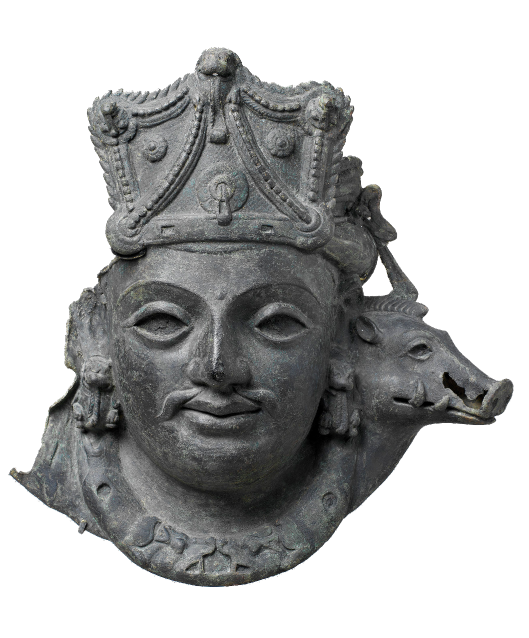PERSPECTIVES
Asif Khan’s Tomb: The Experiment that Shaped the Taj Mahal
Within Lahore’s Shahdara Bagh complex stands one of Shah Jahan‘s most daring architectural commissions — the tomb of Mirza Abul Hasan Asif Khan. Completed in 1645, the mausoleum represents a pivotal moment in Mughal architectural evolution. The innovations in its form, structure, and decoration foreshadowed the perfection later achieved in the Taj Mahal. Built to honour the man whose political loyalty secured Shah Jahan his throne, it was a bold architectural experiment that helped refine Mughal imperial building techniques during its construction.
Asif Khan occupied an extraordinary position in the Mughal court. As brother to Empress Nur Jahan and father to Mumtaz Mahal, his position of influence was unshakeable, grounded in the networks of the Mughal empire’s most powerful family. But his greatest strength was his political acumen rather than familial connections. When Jahangir died in 1628, Nur Jahan began pulling strings to get her son-in-law, Shahryar, the ultimate prize — the emperor’s throne. But Asif Khan defied his sister’s ambitions, supporting Shah Jahan’s claim instead — a decision that determined the empire’s future and the dynastic line of succession.
Rewarded with the title “Khan-e-Khana,” and appointed governor of Lahore in 1637, Asif Khan served at the post until he died in a battle against Raja Jagat Singh in 1641. Shah Jahan ordered the building of a mausoleum befitting Asif Khan’s loyalty — a monument that symbolised dynastic gratitude. According to Abdul Hamid Lahori, the author of the Padshahnama, the construction took four years, from 1641 to 1645, and cost 300,000 rupees (over a quarter of a million) — a significant sum in those days.

The tomb’s location, beside the mausoleums of Jahangir and Nur Jahan, transformed Shahdara Bagh into an imperial necropolis, creating a fascinating architectural paradox. Despite the fallout during the succession crisis, the three monuments stand in close proximity, suggesting that familial bonds ultimately did transcend earthly political squabbles in Mughal memorial practices. Set up within a 300-yard-square, laid out in the chahar bagh design and divided by water channels and pools, Asif Khan’s tomb complex embodies the Islamic vision of the garden of paradise, while also asserting the Mughal dynasty’s intertwined familial and political legacy. Architecturally, however, the octagonal tomb — with its perfectly equal eight sides, internally and externally — represents a decisive break from tradition.
Built on a raised podium, the structure — measuring 38 feet and 8 inches per side — achieves striking symmetry, further enhanced by the eight, identical, and tall pishtaqs (arched gateways). This rhythmic alternation, between the tomb’s walls and soaring openings in the design, creates a dynamic interplay of light and shadow, of solids and voids — one that anticipated the refined spatial harmony of the Taj Mahal that was completed just a few years later, in 1648.
The tomb’s most revolutionary feature, crowning this octagonal base, is one of the earliest examples in Mughal architecture of a true double dome. The inner dome defines the chamber’s spatial volume, while the larger outer dome creates the graceful bulbous silhouette that became a signature technique during Shah Jahan’s reign. This technical innovation, perfected here before being deployed at the Taj Mahal, solved the age-old architectural challenge of reconciling interior space with exterior presence.

The surface decoration also utilised experimental design strategies. One highlight was the marble veneer that once covered the dome’s exterior. It was emblematic of the transitional phase of Mughal architecture — from the predominant use of red sandstone in structures commissioned by Akbar and Jahangir to the white marble favoured by Shah Jahan.
Surprisingly, this shift in taste was influenced by Shah Jahan’s bête noir, Nur Jahan. The year 1628, which marked the start of Shah Jahan’s reign, was also when the Tomb of I’timad-Ud-Daulah was completed in Agra. The mausoleum, widely considered by experts as the monument that “inspired” the Taj Mahal, was commissioned by the empress for her father. Though dome-less, it was the first example of a Mughal tomb finished in white marble with the extensive use of the pietra dura (inlay work) technique.

Asif Khan’s tomb became Shah Jahan’s architectural laboratory to experiment with these decorative elements, along with other styles — like the use of Kashi tiles (glazed, hand-painted clay tiles) with qalib kari designs (geometrical patterns with interlacing stars). It was also the first time that cuerda seca tiles were used in any Mughal imperial building. The pishtaq walls, which have since deteriorated, once shimmered with these tiled, floral motif panels that used bold hues of orange and yellow, with green, black, and white accents. This was a significant departure from the blue-dominated palettes of earlier monuments. These warmer tones and vegetal motifs, symbolising paradise and renewal, created an aesthetic vocabulary unique to Shah Jahan’s Lahore period, demonstrating how colour could transform architecture.
Inside the tomb, the white marble cenotaph bears Quranic verses on its surface and the ninety-nine names of Allah along its sides. Above, squinches bridge the transition from octagonal drum to circular dome base, their surfaces adorned with vegetal stucco tracery. This synthesis of structural logic and spiritual symbolism epitomises Shah Jahan’s architectural philosophy, where every element served both practical and metaphysical purposes.
Tragically, the tomb was systematically destroyed during Ranjit Singh’s 19th-century rule, when marble and sandstone were stripped from all three tombs for reuse in the Golden Temple at Amritsar and the Hazuri Bagh Baradari near Lahore Fort. British explorer William Moorcroft documented this widespread plundering, lamenting over how much of the magnificence of the original structures was lost forever, as a result.

Today, stripped to its brick core, Asif Khan’s tomb stands as a fragmentary witness to its former glory, though its octagonal plan, lofty drum, and resilient dome still command Shahdara’s skyline. It bridges Jahangir’s ornamental exuberance and Shah Jahan’s geometric precision, serving as the crucial experimental prototype that enabled the Taj Mahal’s perfection. Though overshadowed by its more famous successor, Asif Khan’s tomb remains one of the Mughal Empire’s most intellectually daring and innovative architectural creations, one that redefined an empire’s aesthetic legacy.
Shreya Nithyanandan is a Master’s student in History of Art at the Indian Institute of Heritage, Noida (formerly National Museum Institute). She loves exploring art, culture, stories behind objects, and how history shapes what we see today.




